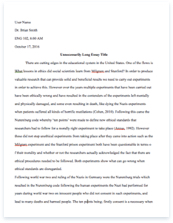Cost Volume Profit Analysis Argumentative

- Pages: 4
- Word count: 785
- Category:
A limited time offer! Get a custom sample essay written according to your requirements urgent 3h delivery guaranteed
Order Now1. Explain the nature of CVP Analysis and name and illustrate planning and Decision-making situations in which it may be used,
2. Separate semi-variable (mixed) costs into their fixed and variable components. 3. Construct profit/volume charts given selling price, costs and volume data. 4. Construct a cost/volume/profit (CVP) model representing the data in a marginal costing profit and loss account 5. Define and calculate the breakeven point using various techniques 6. Apply the CVP model in multi-product situations.
7. Calculate budgeted sales volume required for a given target net income. 8. Calculate and explain the margin of safety.
9. Identify and explain the limitations of C-V-P analysis
KEY TOPICS
The following major topics are covered in this chapter (related learning objectives are listed for each topic).
1.Break-even point in units
2.Break-even point in sales dollars
3.Multiple-product analysis
4.Graphical representation of CVP relationships
5.Changes in the CVP variables
1.BREAK-EVEN POINT IN UNITS
2.BREAK-EVEN POINT IN SALES DOLLARS
Cost-volume-profit analysis enables a firm to determine the sales (in units or dollars) necessary to attain a desired level of profit. CVP analysis is useful in assessing the effect of operating changes (such as changes in selling price or variable cost or fixed costs) upon profit.
The break-even point is the point where total revenues equal total expenses, the point where profit equals zero. This can be expressed as:
Total revenue – Total variable cost – Total fixed cost = $0 or
Total revenue = Total variable cost + Total fixed cost
A.Shortcut to Calculating Break-Even Units
To determine how many units must be sold in order to break even, solve for X (the number of units) in the following equation: Total revenue = Variable cost + Fixed cost
(Selling price per unit)(X) = (Variable cost per unit)(X) + Fixed cost
B.Unit Sales Needed to Achieve Targeted Profit
In order to earn a desired profit, total revenues must equal variable costs, fixed costs, and desired profit.
Total revenue = Total variable cost + Total fixed cost + Desired profit
To determine how many units must be sold in order to earn a desired profit, solve for X (the number of units) in the following equation:
Total revenue = Total variable cost + Total fixed cost + Desired profit (Selling price per unit)(X) = (Variable cost per unit)(X) + Total fixed cost + Desired profit
After fixed costs are covered, the contribution margin per unit above break-even volume is profit per unit.
C.After-Tax Profit Targets
By substituting [(After-tax profit)/(1 – Tax rate)] for before-tax profit into the equation for CVP analysis, the equation becomes: [pic]
D.Break-Even Point in Sales Dollars
Break-even in sales dollars can be calculated using the following equation:
3.MULTIPLE-PRODUCT ANALYSIS
Harvee Manufacturing Company produces two products, X and Y. The following information is presented for both products: X Y
Selling price per unit $46 $36
Variable cost per unit $38 $24
Sales Mix31
Total fixed costs are $234,000.
Determine the company’s break-even point in units.
SOLUTION
SPx – VCx – FC = 0 at the breakeven point
Let: x be units of Y.
3x be units of X
[46(3x) + 36x] – [38(3x) + 24x] – 234,000 = 0 [138x + 36x] – [114x + 24x] – 234,000 = 0
174x – 138x = 234,000
x = 234,000 = 6500 units
36
B/E Point : 6,500 units of Y (x)
19,500 units of X (3x)
4.GRAPHICAL REPRESENTATION OF CVP RELATIONSHIPS
This section discusses the cost-volume-profit graph and profit-volume graphs.
The cost-volume-profit graph depicts the relationships among cost, volume, and profits.
The point where the total revenue line and the total cost line intersect is the break-even point.
Limitations of CVP analysis include:
The analysis assumes a linear revenue function and a linear cost function. The analysis assumes that price, total fixed costs, and unit variable costs can be accurately identified and remain constant over the relevant range. The analysis assumes that units produced are sold.
For multiple-product analysis, the sales mix is assumed to be known. The selling prices and costs are assumed to be known with certainty.
5.CHANGES IN THE CVP VARIABLES
Margin of Safety
Margin of safety is defined as the difference between sales (actual or expected) and the break-even volume.
The margin of safety is a measure of how far sales can drop until the break-even point is reached.
The margin of safety expressed in dollars is the difference between budgeted sales and break-even sales.
Margin of safety = Expected sales – Sales at break-even










